On June 22, I gave a brief overview of American physics and physical science textbooks. As usual, my PowerPoint presentation knocked them out. But, they were quickly revived when I showed them the nine American textbooks I brought. This was the first time many of them had seen an American textbook. Being a sensible bunch, the first question one student asked was "How much do they cost?" The book I was holding has a list price of $70 or about 490 Yuan, the Chinese dollar. They were amazed! I attempted to soften the blow by saying schools will pay less because they buy so many. But, the concept of volume discount got lost in translation. One student showed me the back of her textbook. 10 Yuan. The student in the pink shirt has a Chinese physics education textbook under her left elbow.
Here is a summary of the comments the students made about the American textbooks.
- There are many photographs and drawings. These help us visualize the material and help us learn it better.
- The books are so thick. But, the concepts are not deep. There are too many concepts in the books.
- The pictures and examples relate to our everyday life. There are pictures of children doing science.
- American textbooks are better for most students because most students will not be scientists. They need to know a little about many topics. Chinese textbooks are better for future scientists because they explain the concepts in much depth.
In contrast to American textbooks, the typical Chinese science textbook is much thinner, covers fewer topics, has no color, and few photographs or drawings. The Chinese textbook under the student's elbow and the open American textbook in the picture above can be taken as standard examples of each.
These students want to be middle school physics teachers. The man to my left and the man in front of him are professors. Hopefully, this brief investigation of American textbooks has opened their eyes to the possibilities of supplementing the text-heavy attributes of their textbooks.
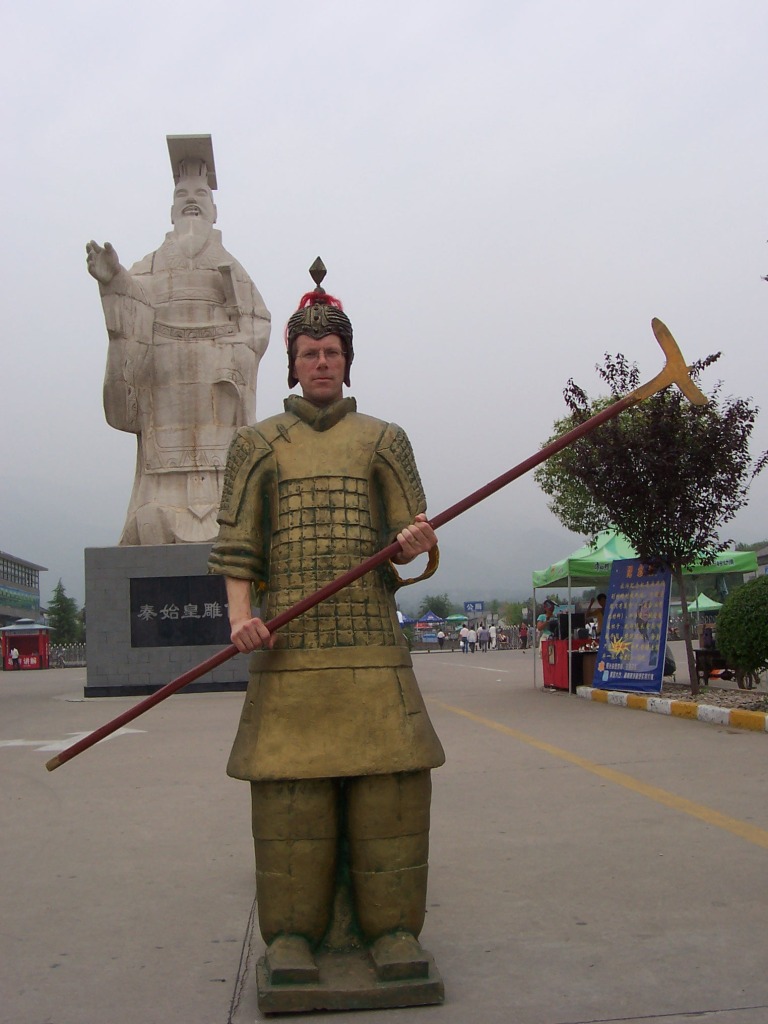


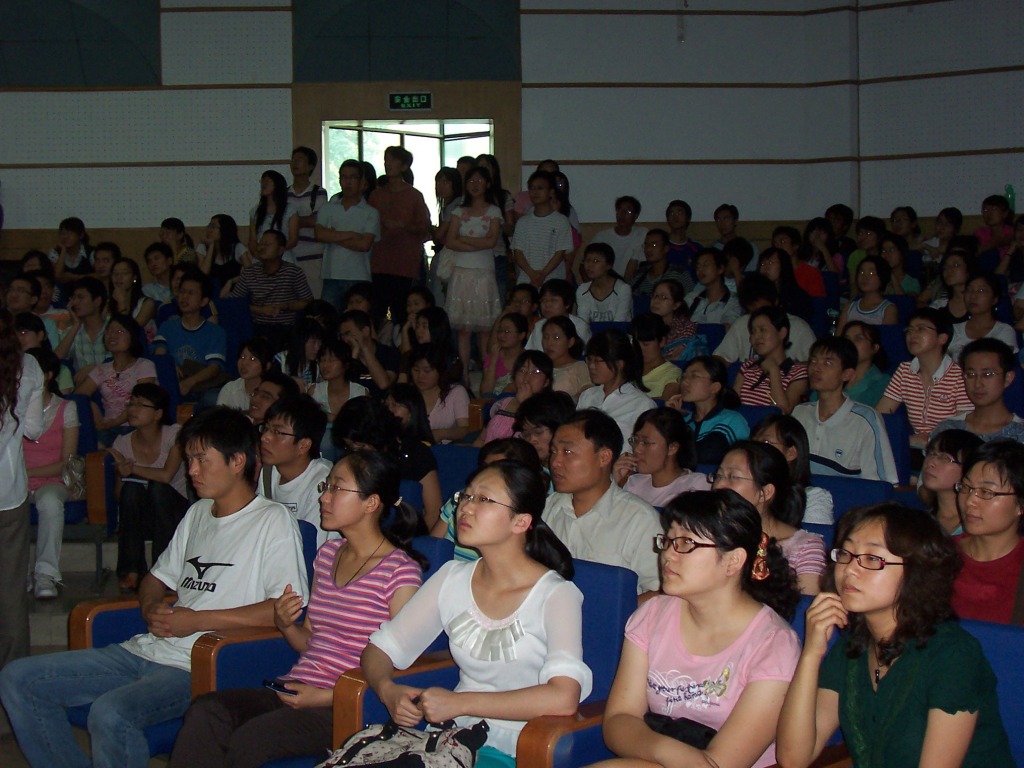
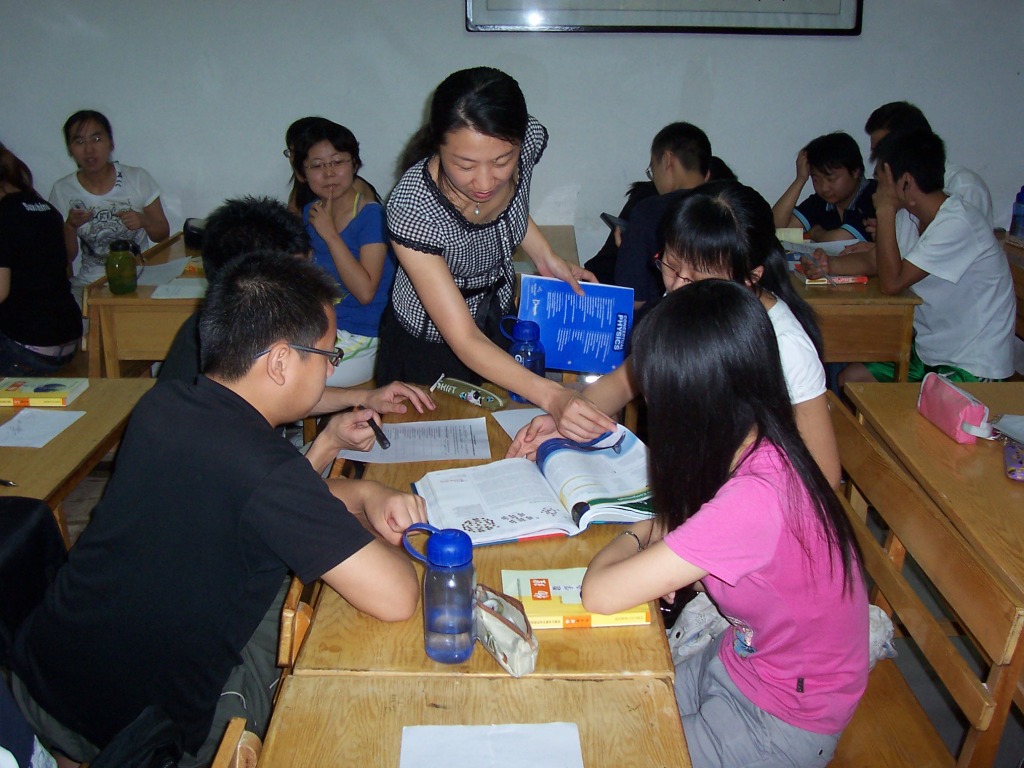




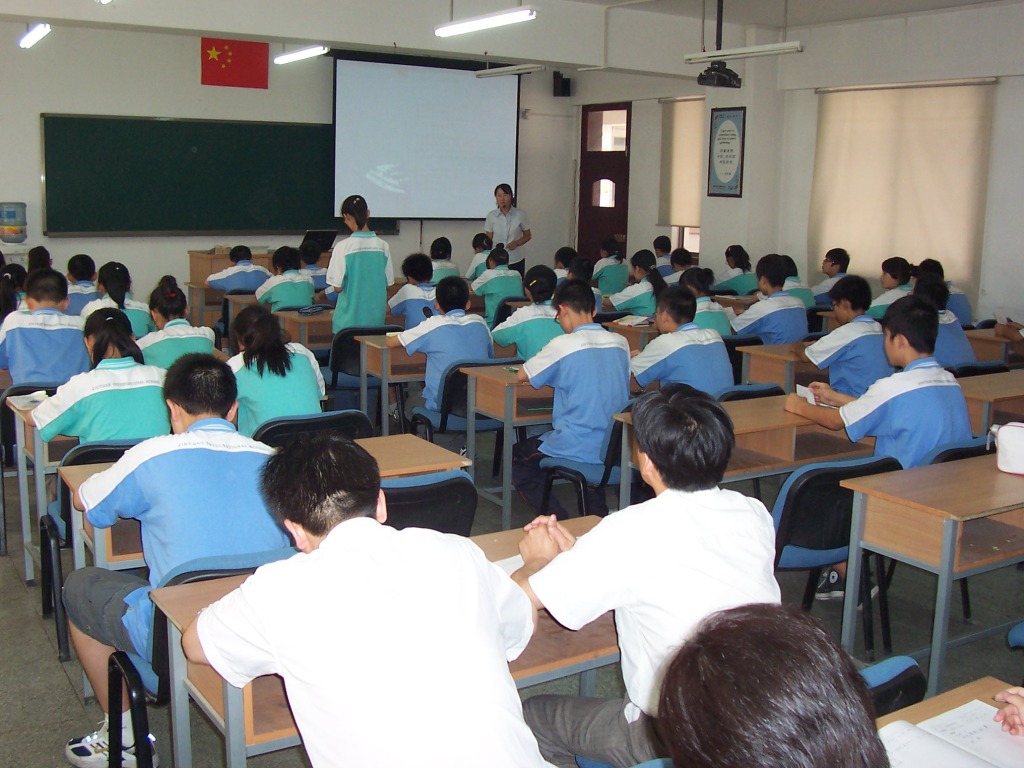
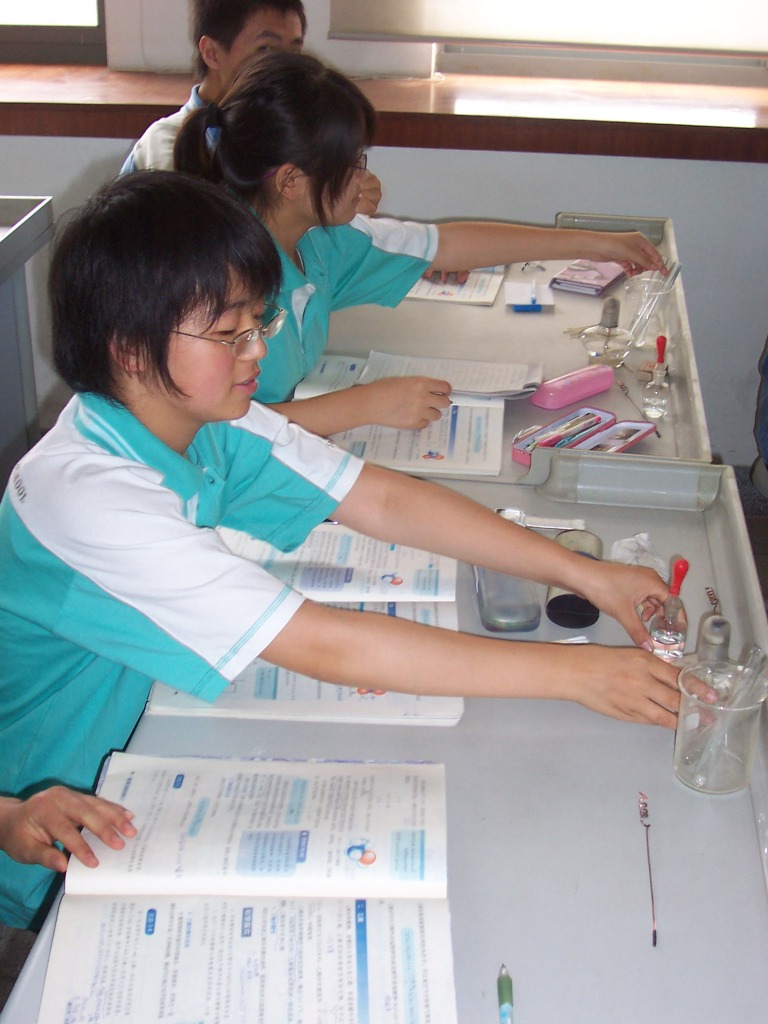
No comments:
Post a Comment